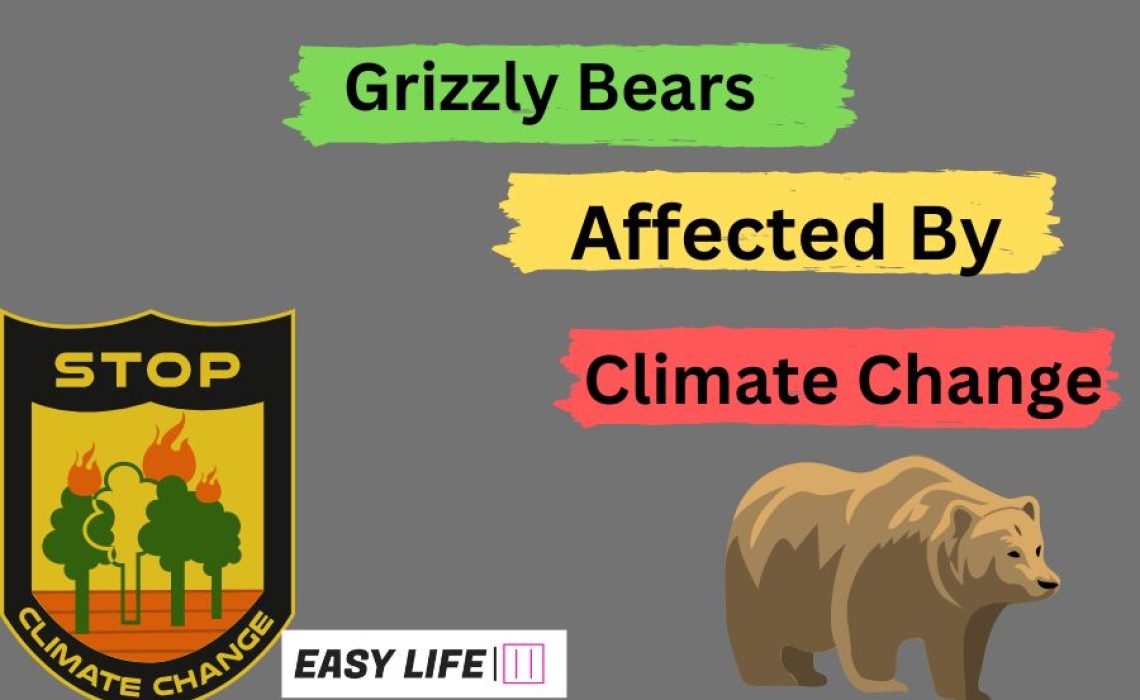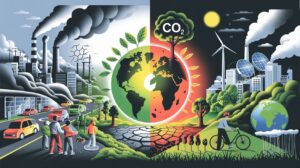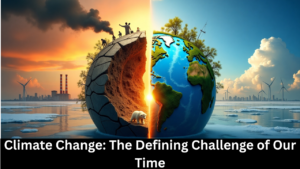Grizzly bears (Ursus arctos horribilis), formidable inhabitants of North America’s forests and mountains, face an uncertain future as climate change alters their ecosystems. In this article, we unravel the complex ways grizzly bears are affected by climate change and the potential repercussions for these majestic creatures.
Table of Contents
ToggleRoaming a Changing World: Grizzly Bears and the Consequences of Climate Change
here are some points grizzly bears are affected by climate change:
-
Shifting Food Resources: A Feast in Flux
As climate change disrupts ecosystems, grizzly bears encounter challenges related to their diverse diet:
- Berry production: Warmer temperatures and changing precipitation patterns may reduce the availability of berries, a crucial seasonal food source for grizzlies.
- Fish populations: Climate change can affect the abundance and distribution of fish, such as salmon, impacting bears’ access to this high-energy food source.
- Pine nuts decline: Warmer temperatures and drought conditions can increase mountain pine beetle infestations, leading to a decline in whitebark pine trees and the nutrient-rich nuts they produce.
-
Habitat Changes: An Evolving Landscape
Grizzly bears must navigate a transforming environment as climate change reshapes their habitats:
- Altered vegetation: Climate change can affect plant distribution, forcing grizzlies to adapt their foraging habits or range further to find suitable food.
- Habitat fragmentation: Human development and land use changes, exacerbated by climate change, can fragment grizzly bear habitats, potentially hindering movement and gene flow between populations.
-
Conflicts with Humans: A Dangerous Encounter
Climate change may indirectly increase grizzly bear-human conflicts:
- Scarcity-driven encounters: As natural food sources become less predictable, grizzlies may venture closer to human-populated areas in search of sustenance. Raising the risk of dangerous encounters.
- Competition for resources: Changes in land use and habitat can exacerbate competition between grizzlies and humans for limited resources, increasing the potential for conflicts.
-
Phenological Shifts: A Race Against Time
Grizzly bears, like many species, rely on the timing of seasonal events:
- Hibernation challenges: Warmer temperatures and shifting food availability may alter the timing of grizzly bears’ hibernation. Potentially affecting their fat reserves, reproduction, and survival.
- Mismatched life cycles: Climate change may cause mismatches between bears and their prey or plant food sources. With potential consequences for their diet and overall health.
Conclusion: grizzly bears affected by climate change
Climate change presents a myriad of challenges for grizzly bears, from shifting food resources to altered habitats and increased human conflicts. Understanding these impacts is essential for developing effective conservation strategies and fostering a sustainable future for these awe-inspiring animals. By addressing climate change and protecting critical habitats. We can help ensure that grizzly bears continue to roam the wilderness for generations to come.
FAQ
What climate do grizzly bears like?
Grizzly bears prefer temperate climates, typically found in forests, mountains, and alpine meadows across North America. They thrive in environments with abundant food sources and natural cover for shelter and denning.
How do grizzly bears adapt to climate change?
Grizzly bears adapt to climate change by adjusting their foraging habits, seeking alternative food sources, and expanding their range. And altering their hibernation patterns in response to changing environmental conditions.
Can a grizzly bear survive in the cold?
Yes, grizzly bears can survive in cold environments. They are well-adapted to living in cold climates, with thick fur and a layer of fat for insulation. During the coldest months, grizzlies typically hibernate in dens, conserving energy and living off their fat reserves until warmer temperatures return.
What are 3 adaptations of a grizzly bear?
Three adaptations of a grizzly bear include:
- Hibernation: Grizzly bears hibernate during the winter months to conserve energy. And survive on stored fat reserves when food is scarce.
- Thick fur and fat layer: Grizzlies have a dense, thick fur coat and a substantial layer of fat beneath their skin. Providing insulation against cold temperatures and protection from injuries.
- Strong forelimbs and claws: Grizzly bears have powerful forelimbs and long, curved claws. Which enables them to dig, climb, and catch prey, as well as defend themselves against potential threats.







2 thoughts on “How Are Grizzly Bears Affected By Climate Change?”
Pingback: How Does Climate Change Affects Biodiversity? - 2023
Pingback: "How Are Green Sea Turtles Affected By Climate Change"